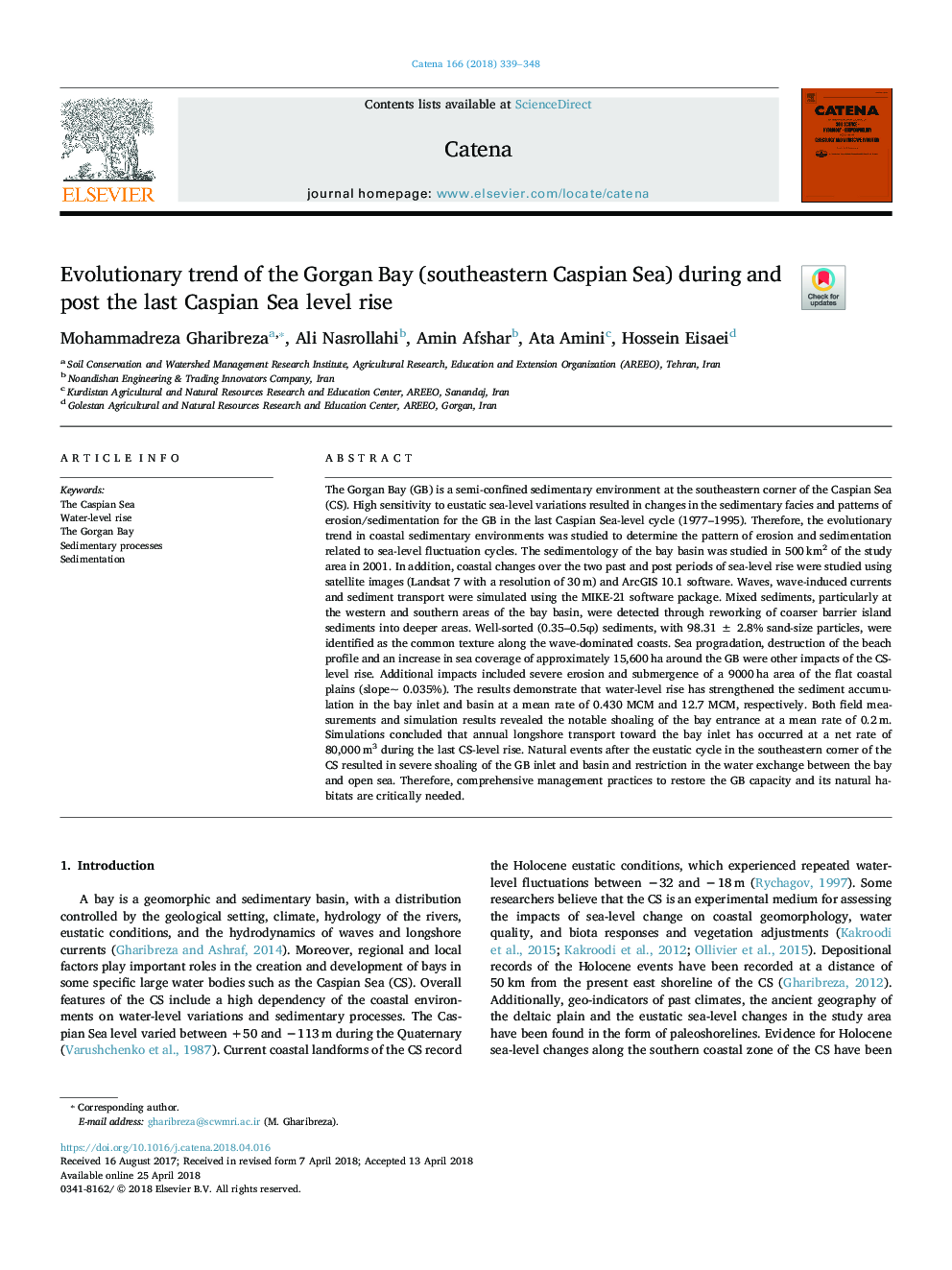| کد مقاله | کد نشریه | سال انتشار | مقاله انگلیسی | نسخه تمام متن |
|---|---|---|---|---|
| 8893561 | 1629188 | 2018 | 10 صفحه PDF | دانلود رایگان |
عنوان انگلیسی مقاله ISI
Evolutionary trend of the Gorgan Bay (southeastern Caspian Sea) during and post the last Caspian Sea level rise
ترجمه فارسی عنوان
روند تکاملی خلیج گرگان (دریای خزر دریای خزر) در طول و پس از افزایش آخرین سطح دریای
دانلود مقاله + سفارش ترجمه
دانلود مقاله ISI انگلیسی
رایگان برای ایرانیان
کلمات کلیدی
دریای خزر، افزایش سطح آب، خلیج گرگان، فرآیندهای رسوبی، رسوبگذاری،
موضوعات مرتبط
مهندسی و علوم پایه
علوم زمین و سیارات
فرآیندهای سطح زمین
چکیده انگلیسی
The Gorgan Bay (GB) is a semi-confined sedimentary environment at the southeastern corner of the Caspian Sea (CS). High sensitivity to eustatic sea-level variations resulted in changes in the sedimentary facies and patterns of erosion/sedimentation for the GB in the last Caspian Sea-level cycle (1977-1995). Therefore, the evolutionary trend in coastal sedimentary environments was studied to determine the pattern of erosion and sedimentation related to sea-level fluctuation cycles. The sedimentology of the bay basin was studied in 500â¯km2 of the study area in 2001. In addition, coastal changes over the two past and post periods of sea-level rise were studied using satellite images (Landsat 7 with a resolution of 30â¯m) and ArcGIS 10.1 software. Waves, wave-induced currents and sediment transport were simulated using the MIKE-21 software package. Mixed sediments, particularly at the western and southern areas of the bay basin, were detected through reworking of coarser barrier island sediments into deeper areas. Well-sorted (0.35-0.5Ï) sediments, with 98.31â¯Â±â¯2.8% sand-size particles, were identified as the common texture along the wave-dominated coasts. Sea progradation, destruction of the beach profile and an increase in sea coverage of approximately 15,600â¯ha around the GB were other impacts of the CS-level rise. Additional impacts included severe erosion and submergence of a 9000â¯ha area of the flat coastal plains (slope~ 0.035%). The results demonstrate that water-level rise has strengthened the sediment accumulation in the bay inlet and basin at a mean rate of 0.430 MCM and 12.7 MCM, respectively. Both field measurements and simulation results revealed the notable shoaling of the bay entrance at a mean rate of 0.2â¯m. Simulations concluded that annual longshore transport toward the bay inlet has occurred at a net rate of 80,000â¯m3 during the last CS-level rise. Natural events after the eustatic cycle in the southeastern corner of the CS resulted in severe shoaling of the GB inlet and basin and restriction in the water exchange between the bay and open sea. Therefore, comprehensive management practices to restore the GB capacity and its natural habitats are critically needed.
ناشر
Database: Elsevier - ScienceDirect (ساینس دایرکت)
Journal: CATENA - Volume 166, July 2018, Pages 339-348
Journal: CATENA - Volume 166, July 2018, Pages 339-348
نویسندگان
Mohammadreza Gharibreza, Ali Nasrollahi, Amin Afshar, Ata Amini, Hossein Eisaei,
